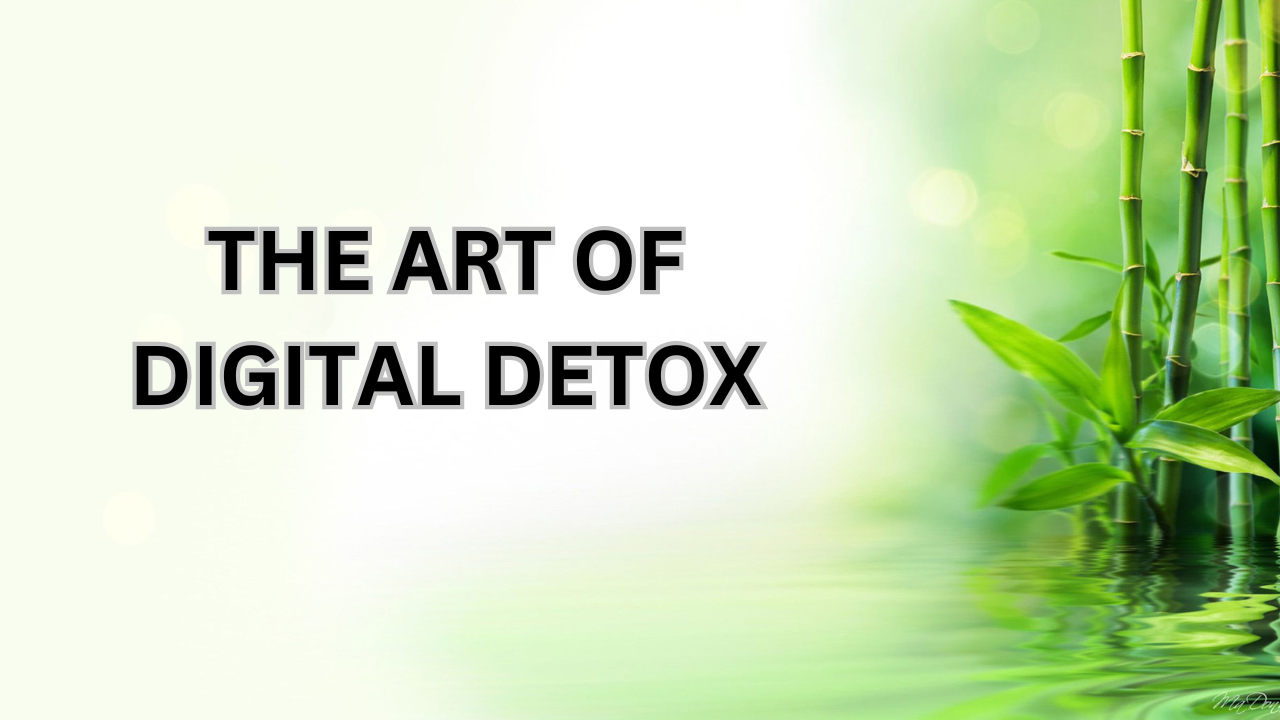In our hyper-connected world, where smartphones, social media, and constant notifications dominate our daily lives, the concept of digital detox has emerged as a vital practice for enhancing well-being. A digital detox involves taking an intentional break from digital devices and online platforms to reclaim time, reduce stress, and foster meaningful connections in the physical world.
As individuals increasingly recognize the negative impacts of excessive screen time—such as anxiety, sleep disturbances, and diminished focus—the art of digital detoxing offers a refreshing opportunity to reconnect with oneself and nature. By consciously stepping away from screens, individuals can cultivate mindfulness, improve productivity, and enhance their overall quality of life.
Benefits of Digital Detox:
Engaging in a digital detox offers a multitude of benefits that can significantly enhance mental, emotional, and physical well-being. One of the primary advantages is the reduction of stress and anxiety, as stepping away from constant notifications and social media pressures allows individuals to enjoy a calmer state of mind. This break can lead to improved focus and productivity, as reduced digital distractions create space for deeper concentration on tasks and creative pursuits.
Additionally, a digital detox fosters stronger interpersonal relationships; without the interference of screens, individuals can engage in more meaningful conversations and activities with family and friends. Enhanced sleep quality is another benefit, as reducing screen time—especially before bedtime—promotes better sleep hygiene. Furthermore, a digital detox encourages individuals to reconnect with nature and engage in physical activities, contributing to improved overall health.
Types of Digital Detox:
A digital detox can take various forms, each tailored to individual needs and lifestyles. Complete digital detox involves taking a total break from all digital devices, including smartphones, computers, and social media, for a set period, allowing individuals to disconnect entirely and recharge. A partial detox focuses on limiting specific devices or activities, such as reducing time spent on social media or avoiding certain apps that contribute to stress or anxiety.
Scheduled detoxes incorporate designated times during the day or week where individuals intentionally refrain from using digital devices, promoting mindful consumption and helping to establish healthier habits. Tech-free zones in the home, such as during meals or in bedrooms, can create spaces where technology is not allowed, fostering genuine interactions and better sleep.
Additionally, digital sabbaticals involve extended breaks, such as a week or month away from technology, often combined with travel or immersive experiences that encourage personal growth and exploration. Each type of digital detox offers unique benefits, allowing individuals to choose the approach that best fits their lifestyle and goals for improved well-being.
Preparing for Digital Detox:
Preparing for a digital detox involves thoughtful planning and intentionality to ensure a successful and rewarding experience. Start by setting clear goals for the detox, such as reducing stress, improving focus, or enhancing personal relationships, which will provide motivation and direction. Next, choose a specific timeframe for the detox, whether it’s a few hours, days, or longer, and communicate this plan to friends and family to garner their support.
It’s also helpful to identify triggers that lead to excessive screen time, such as boredom or social media notifications, and find alternative activities to fill that time, like reading, exercising, or engaging in hobbies. Gradually reducing screen time leading up to the detox can help ease the transition, making it less daunting.
Strategies for Successful Digital Detox
Implementing effective strategies is essential for a successful digital detox, ensuring individuals can disconnect and reap the full benefits of this practice. One powerful approach is to establish specific boundaries, such as designated tech-free times or zones in your home, where devices are not permitted. This creates a structured environment that encourages face-to-face interactions and mindfulness.
Another key strategy is to replace screen time with engaging alternatives, such as reading, exercising, or exploring hobbies that bring joy and fulfillment, making it easier to shift focus away from devices. Mindfulness practices, such as meditation or journaling, can also help individuals reflect on their relationship with technology and cultivate a deeper sense of presence.
Engaging in social commitments or activities with friends and family during the detox can foster connection and support, making it easier to stay motivated and accountable. Finally, it’s beneficial to track progress and celebrate small victories along the way, reinforcing positive changes and encouraging continued efforts toward a balanced digital lifestyle.
Digital Detox Tools and Resources:
A variety of tools and resources can enhance the digital detox experience, helping individuals disconnect from technology and foster healthier habits. Apps designed to track screen time, such as Moment or Screen Time, provide insights into usage patterns and encourage mindful consumption by setting limits on device use. Website blockers like Cold Turkey or Freedom can help individuals resist.
Additionally, mindfulness and meditation apps, such as Headspace or Calm, offer guided sessions that support mental clarity and relaxation, making it easier to cope with the urge to reconnect. Books and articles on digital wellness, like “Digital Minimalism” by Cal Newport, provide valuable insights and strategies for maintaining a balanced digital life.
Creating a sustainable Digital Lifestyle:
Creating a sustainable digital lifestyle involves developing habits and strategies that foster a balanced relationship with technology, allowing individuals to enjoy its benefits without falling into patterns of overuse. One key aspect is to establish clear boundaries around device usage, such as setting specific times for checking emails or social media, and prioritizing face-to-face interactions whenever possible.
Incorporating mindful technology use is essential; this can include reflecting on the purpose of digital activities and ensuring they align with personal values and goals. Additionally, curating digital environments by unfollowing accounts that promote negativity or distraction can enhance overall well-being. Embracing offline activities, such as hobbies, exercise, and spending time in nature.
Case Studies and Examples:
Case studies and examples of successful digital detox initiatives illustrate the transformative impact of reducing screen time and fostering healthier digital habits. One notable example is the “Digital Detox Camp,” where participants immerse themselves in a tech-free environment for several days, engaging in activities such as hiking, art, and group discussions.
Another case is the “30-Day Digital Declutter Challenge,” where individuals commit to a month of mindful tech usage by decluttering their digital spaces, setting limits on social media, and prioritizing face-to-face interactions. Participants frequently report a renewed sense of purpose and improved productivity.

